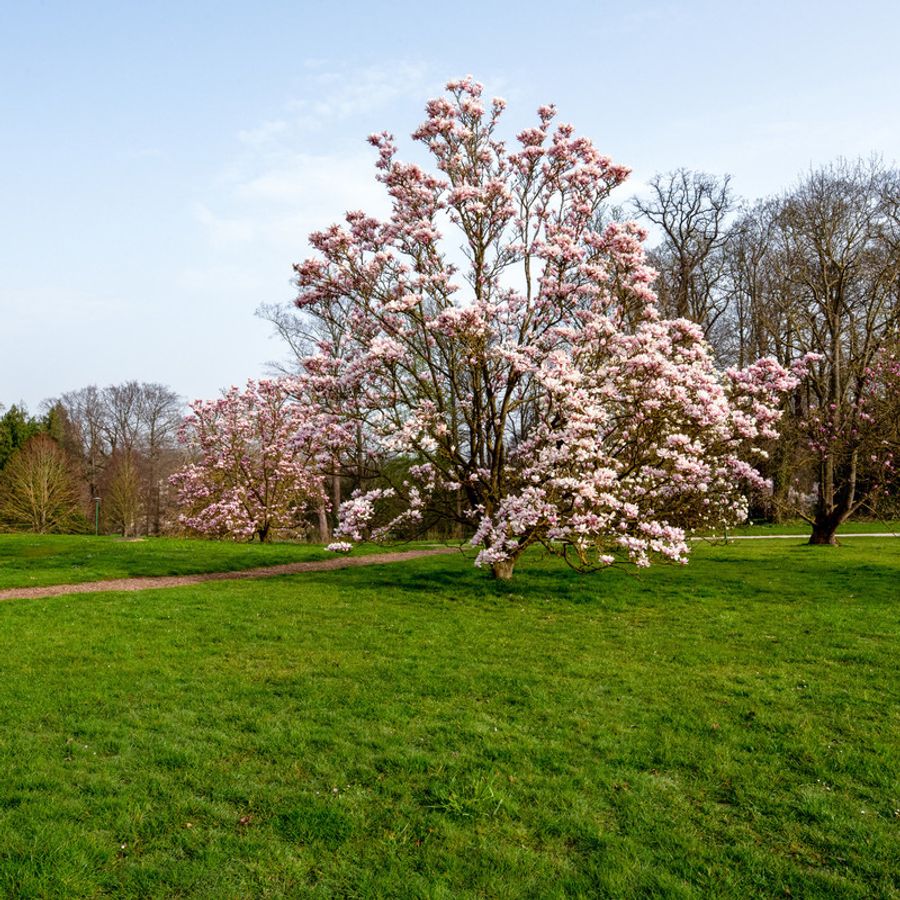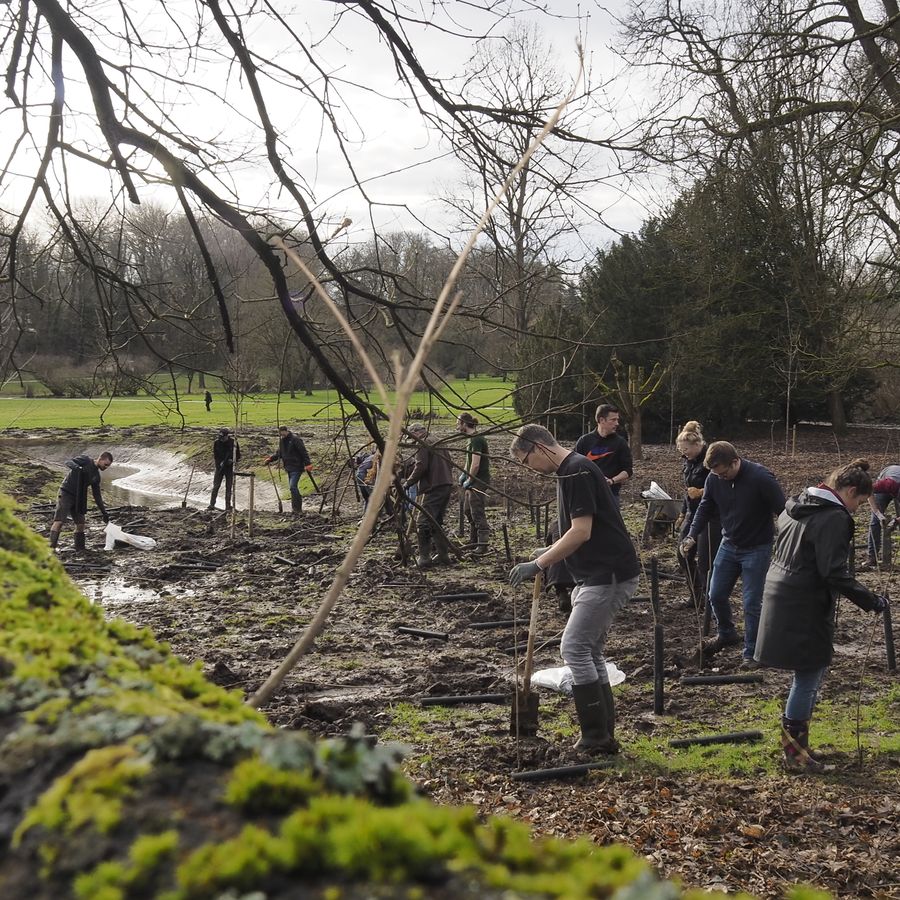Sustainability and climate
We walk the talk
Meise Botanic Garden is like a green ark. Our collections house endangered plant species from all over the world, with an important portion of them under glass. For other plants, the seed bank is the last refuge that saves them from extinction. Our collections help us to identify plants, and to study and better understand plants and their habitats.
A lot of effort is put into preserving the biodiversity of our green planet in a sustainable way. As a Botanic Garden, we are strongly aware that the whole picture has to be just right. Only by respecting the carrying capacity of the earth will we achieve a sustainable future, and it is precisely for this purpose that it is necessary to preserve biodiversity. Helping to protect biodiversity starts with the operation of the Botanic Garden itself, by:
- keeping our energy consumption as low as possible,
- using clean energy,
- being economical with raw materials and water,
- burdening the environment as little as possible.
Thanks to our efforts, we achieved the international sustainability label Green Key. We proudly carry this label, and we continue our efforts.
Meise Botanic Garden is located on a heritage site with energy consuming historical buildings (50) and heating installations with a large CO2 footprint. More than half of our plant collection is in greenhouses (15,000 m2). The Botanic Garden's energy consumption is equivalent to that of 500 Belgian families.
Via the Master plan, we are working step by step to make our heritage more sustainable and to switch to clean energy.
Sometimes we choose to build new buildings, in which case we focus on the best available techniques and circular construction. For other buildings, we make the most of renovation techniques.
- When renovating the Traditional Farm House “Vlaamse Hoeve” and the new entrance buildings, we opted for extensive insulation and a geothermal heat pump for heating.
- In the Plant Palace, we significantly improved the wind tightness of the greenhouses by renovating the wooden frames and installing new glass, and we renewed the network of heating pipes.
- An important part of the plant collection is housed in a new greenhouse, the Green Ark, equipped with the latest climate control techniques. We are aiming for a 25% reduction in energy consumption here.
- In the Bouchout Castle innovative super-insulating glazing has been installed, thin enough to fit in the existing woodwork.
- The new technical building will be built entirely according to the principles of circular construction. All materials will be able to be reused later.
- The next planned makeover will be the Herbarium Building. This will be a climate-neutral building, where the herbarium collections will be kept at a temperature of 16°C to prevent mould and insect damage.
The greenhouses and the majority of the historical buildings are heated via a heat network, centrally heated with gas. The installation of a cogeneration unit on this network provided an initial efficiency gain. We produce our own electricity and use the residual heat to heat the buildings. A second step was new gas condensing boilers. These can be switched on in stages, allowing us to heat more efficiently. The next step is to install a geothermal heat pump with a capacity of 1MW. This accounts for about half of our heat demand, and also allows for cooling in summer. The installation of solar panels for sustainable electricity production closes the loop. By 2030 the carbon footprint of the Botanic Garden will have dropped by at least 65%, which is well within European ambitions.
In our day-to-day operations we are sparing with raw materials and water. The rainwater from the buildings is collected in central tanks, storing a total of 1 million litres of water. An extensive network of pipes distributes the water throughout the estate. All plant and pruning waste is processed into compost on the estate. Nothing goes to waste. At public events, only reusable materials are used, not disposable ones. The same applies in our restaurants and to our caterers. At meetings, we serve tap instead of bottled water, in a stylish carafe. We use recycled paper, both at the printer and in the toilets...
The Botanic Garden has not used herbicides since 2015. Weeding is done by hand with the help of volunteers. To keep the paths clear we use alternative methods such as steam. We collaborate with a specialist company for this purpose. All cleaning and maintenance products carry the eco-label.
Working on sustainability can also be done through the little things. We provide a tasty vegetarian option in restaurants and coffee shops, and through our catering services also for professional customers. Organic products are given a special designation on the menu of our restaurants. This allows visitors to make a conscious choice. At the coffee buffet of your meeting you will find bottles of milk, and a biscuit tin... Our visitors sort their waste or, better still, they take it home.
Meise Botanic Garden is on its way to becoming a climate-neutral Botanic Garden. But we want to go one step further. We are also committed to a climate-robust future. Since 2023, the straightened Amelvonnesbeek has been allowed to meander again so that there is a much better buffer effect in case of both drought and flooding. At the same time, 2,500 new trees and bushes were planted on the bank: a new piece of wet nature.
The Botanic Garden is also doing its bit internationally.
Virunga National Park (DR Congo) has one of the highest ecological values in Africa. Unfortunately the park is under threat. The extreme poverty of the surrounding population, for whom wood is an important source of energy, exacerbates this problem. About five million people live within a day's walk of the park's borders. In 2020, Meise Botanic Garden and the Virunga Foundation received financial support from the Flemish Government to jointly implement the "CliMA Virunga" programme. The aim is to reduce the communities' impact on the park's ecological resources by planting 1,500 hectares of trees, mainly local and fast-growing species, and to develop a sustainable energy system. We are thus mitigating the effects of climate change in order to preserve the park's exceptional biodiversity. We are doing this with a strong involvement of the local communities.
It is also necessary to adapt crops to the changing climate. The cultivation of coffee, for example, is also threatened by climate change. Since 2020, the Botanic Garden, together with the local community in Yangambi (DR Congo) and local and international partner organisations, has been building sustainable forest farming systems for the production of robusta coffee. Adapted cultivation methods and the use of local cultivars will hopefully make agriculture more climate resilient and help the local population to obtain a sustainable income. Various cultivars and cultivation methods, and their adoption by local communities, are being evaluated in trial fields.






